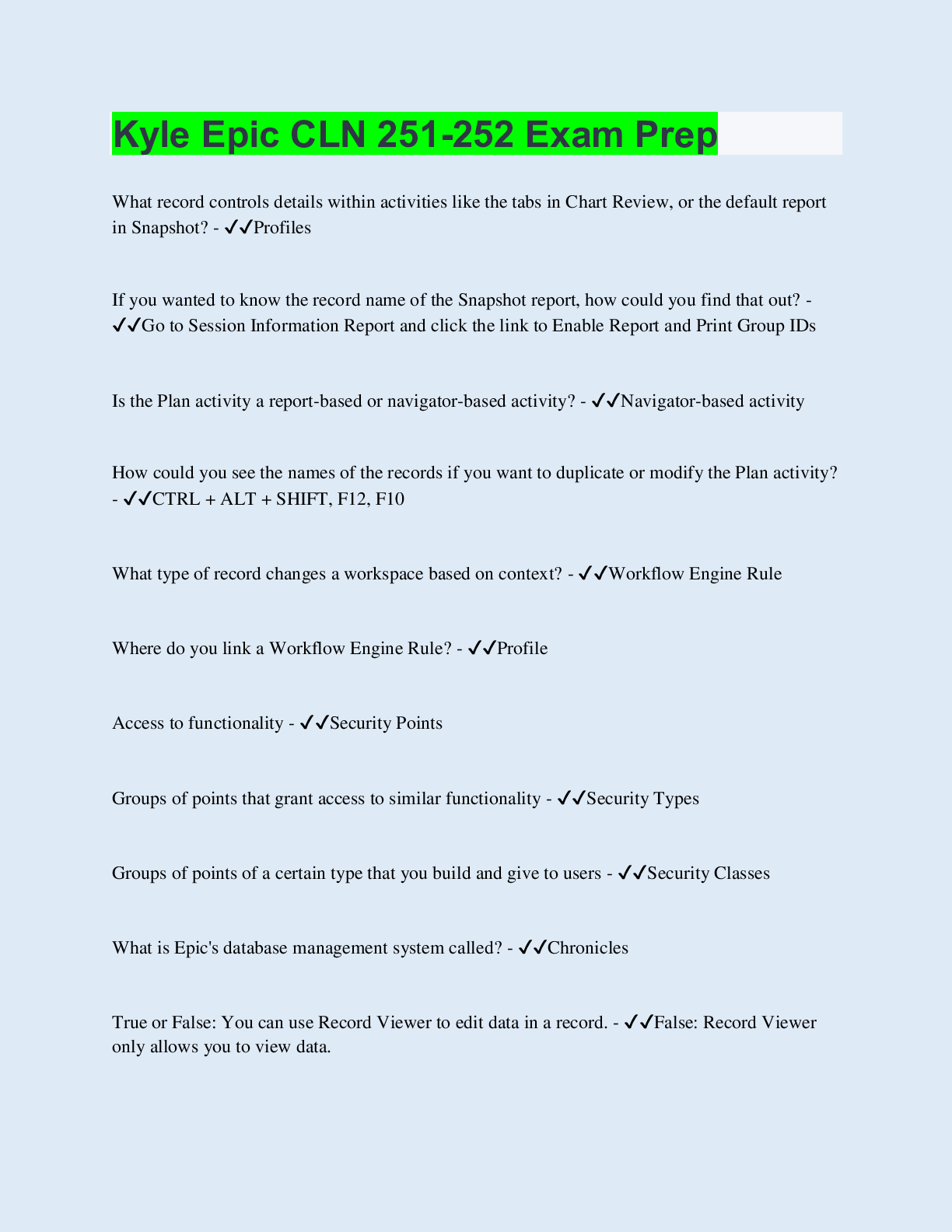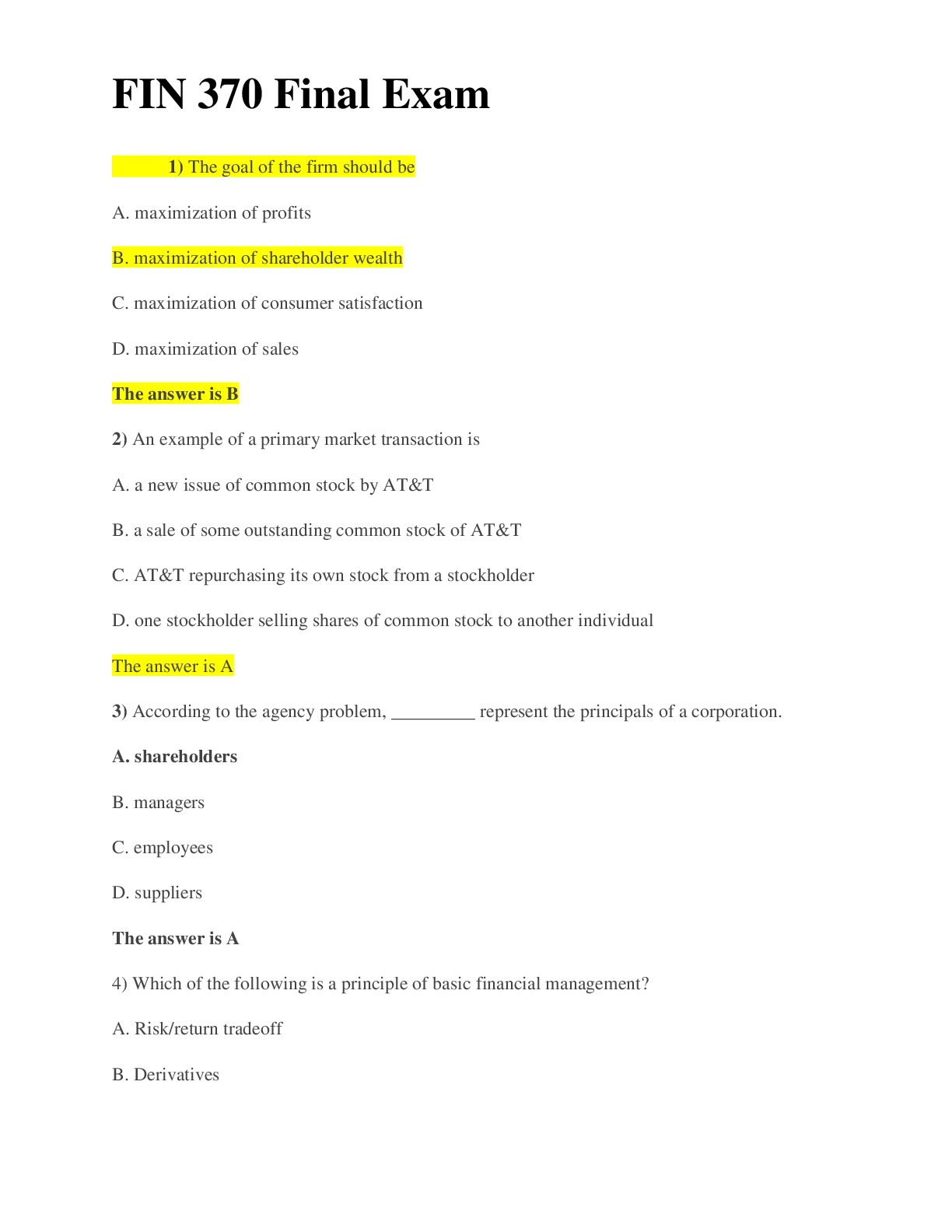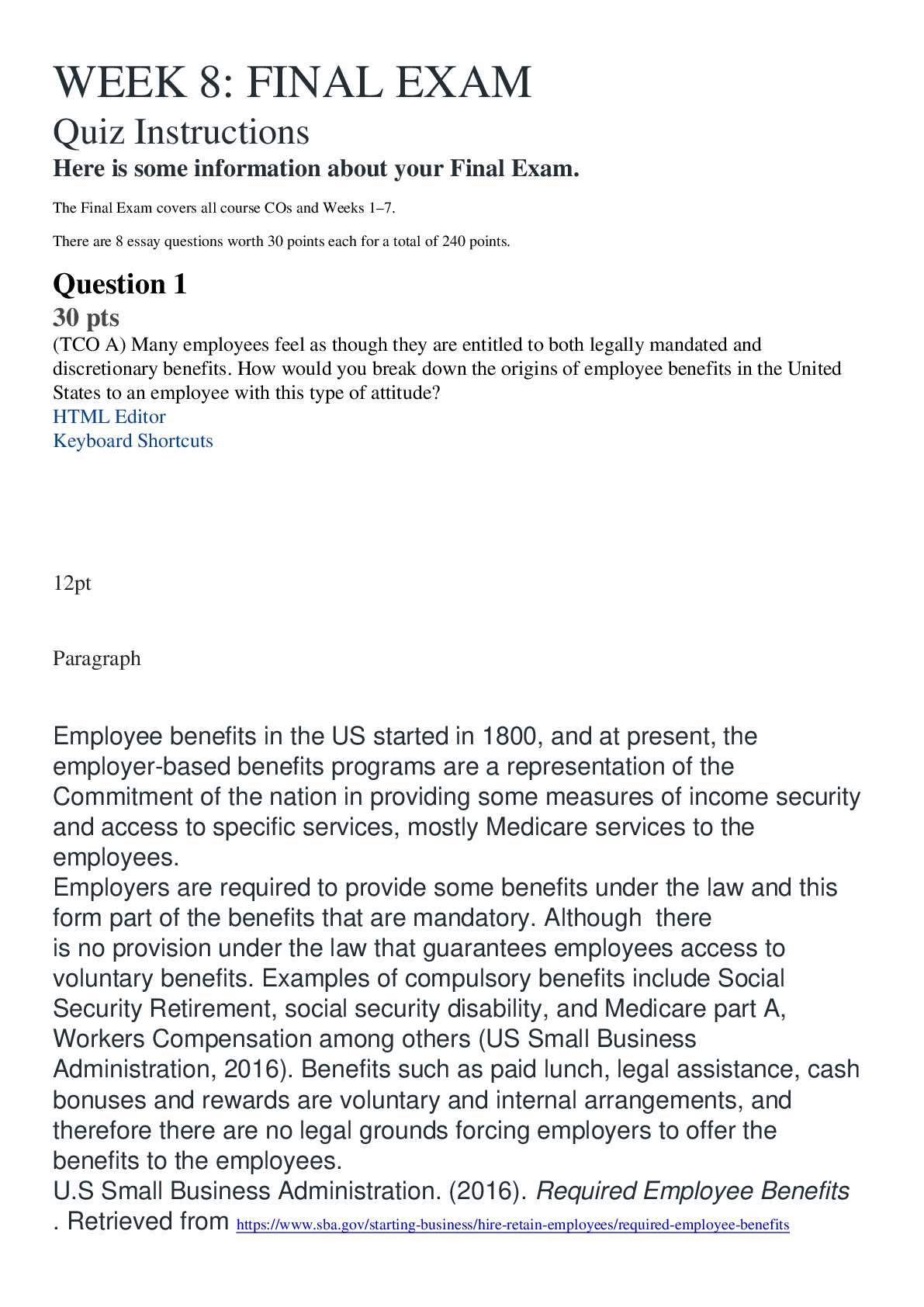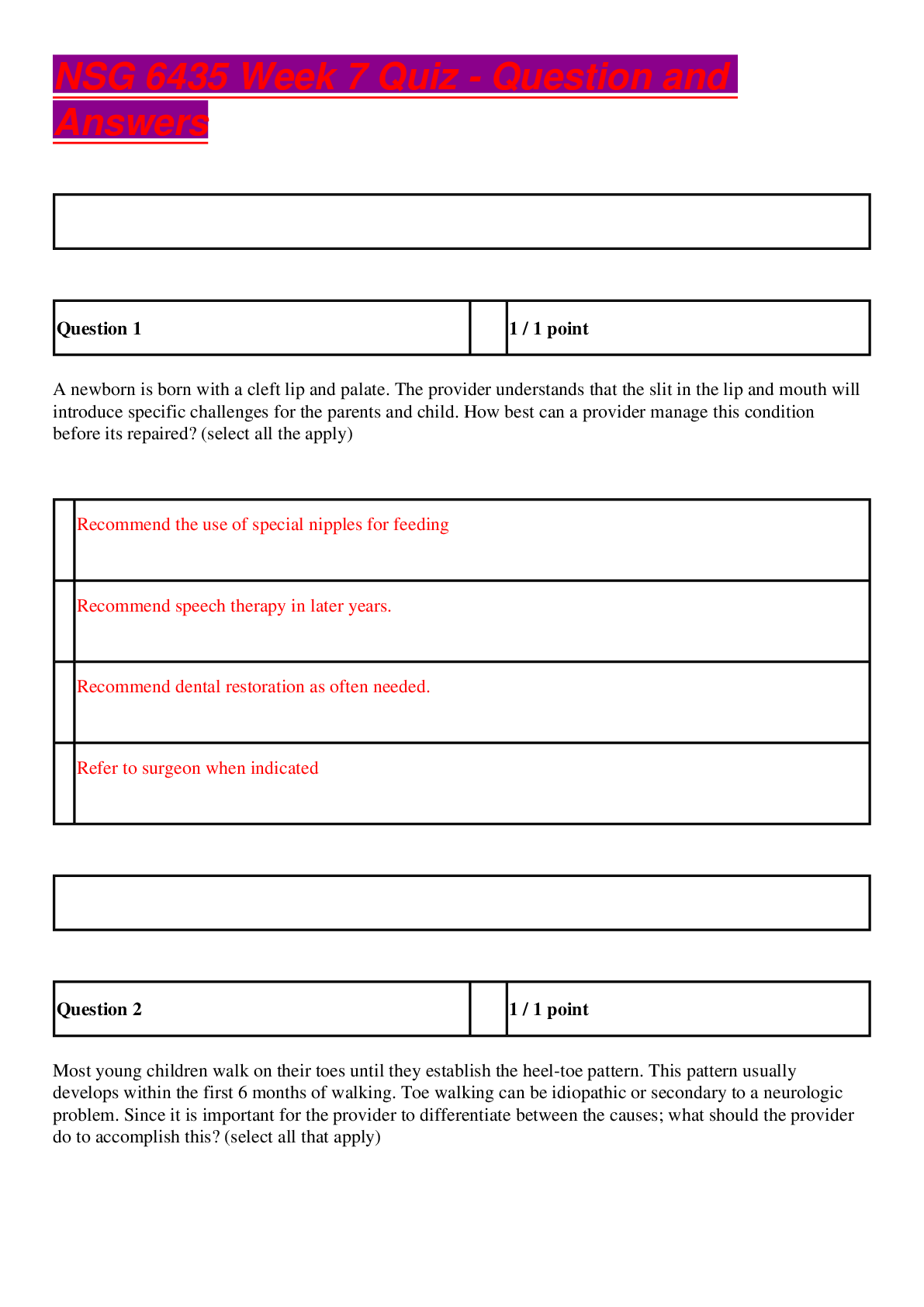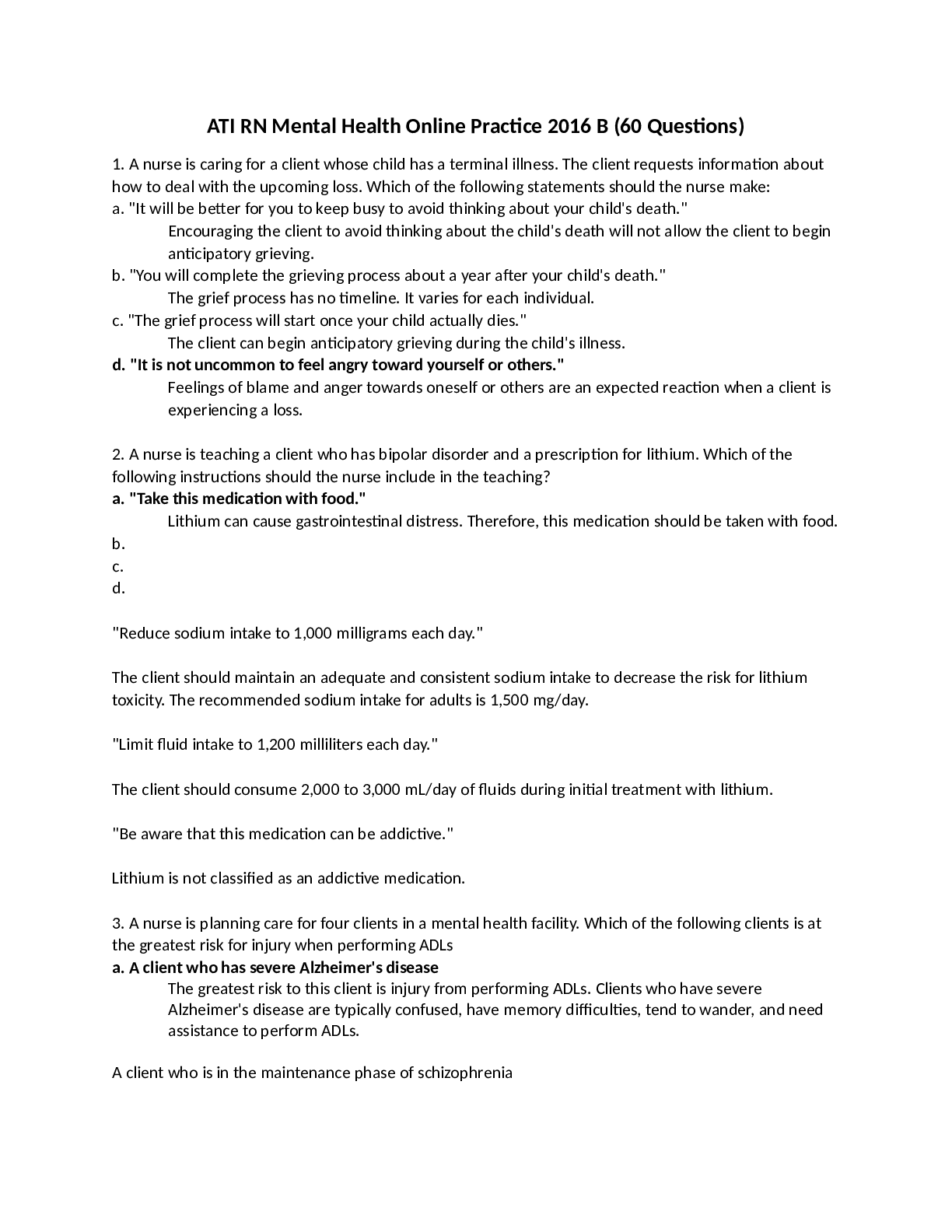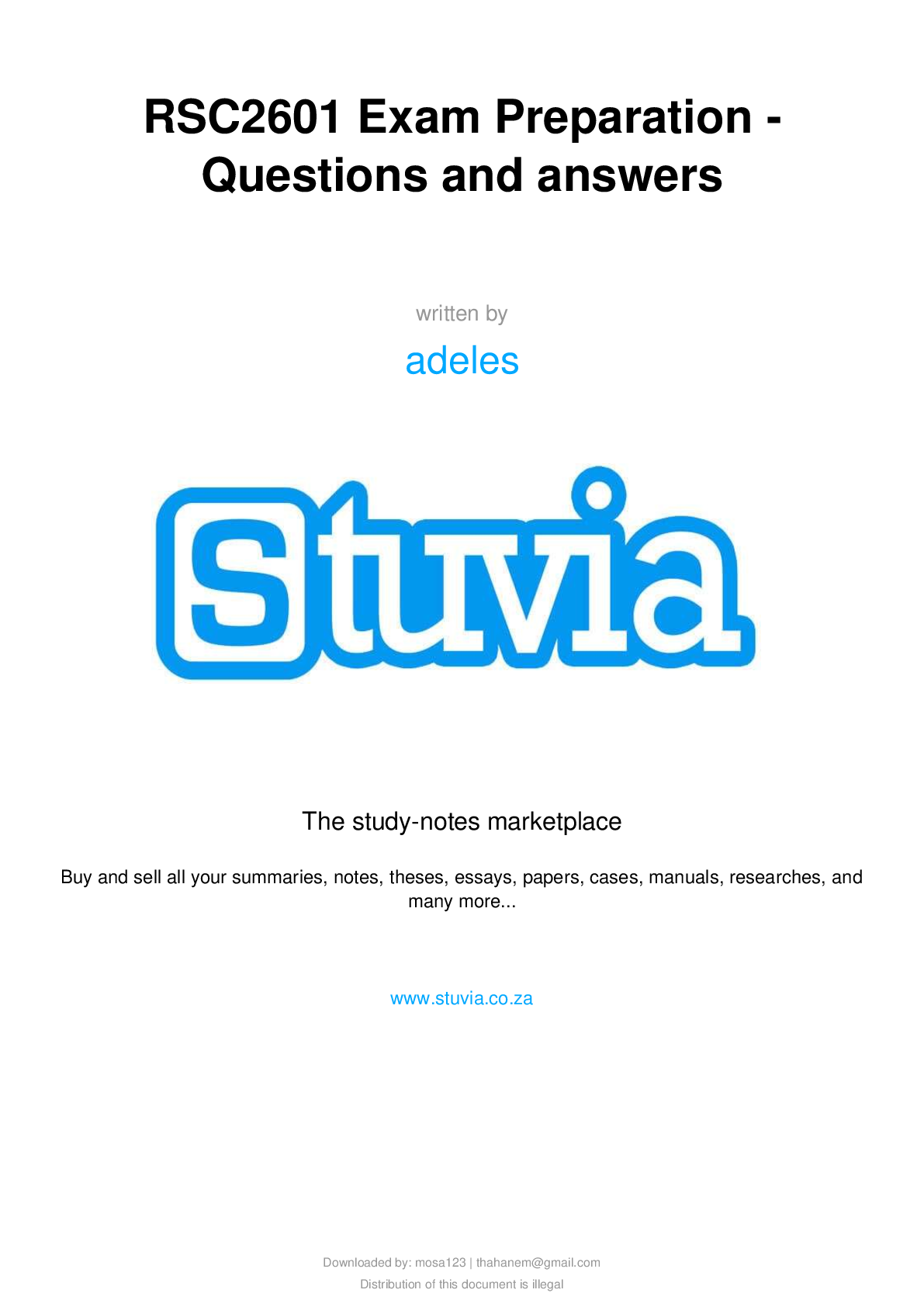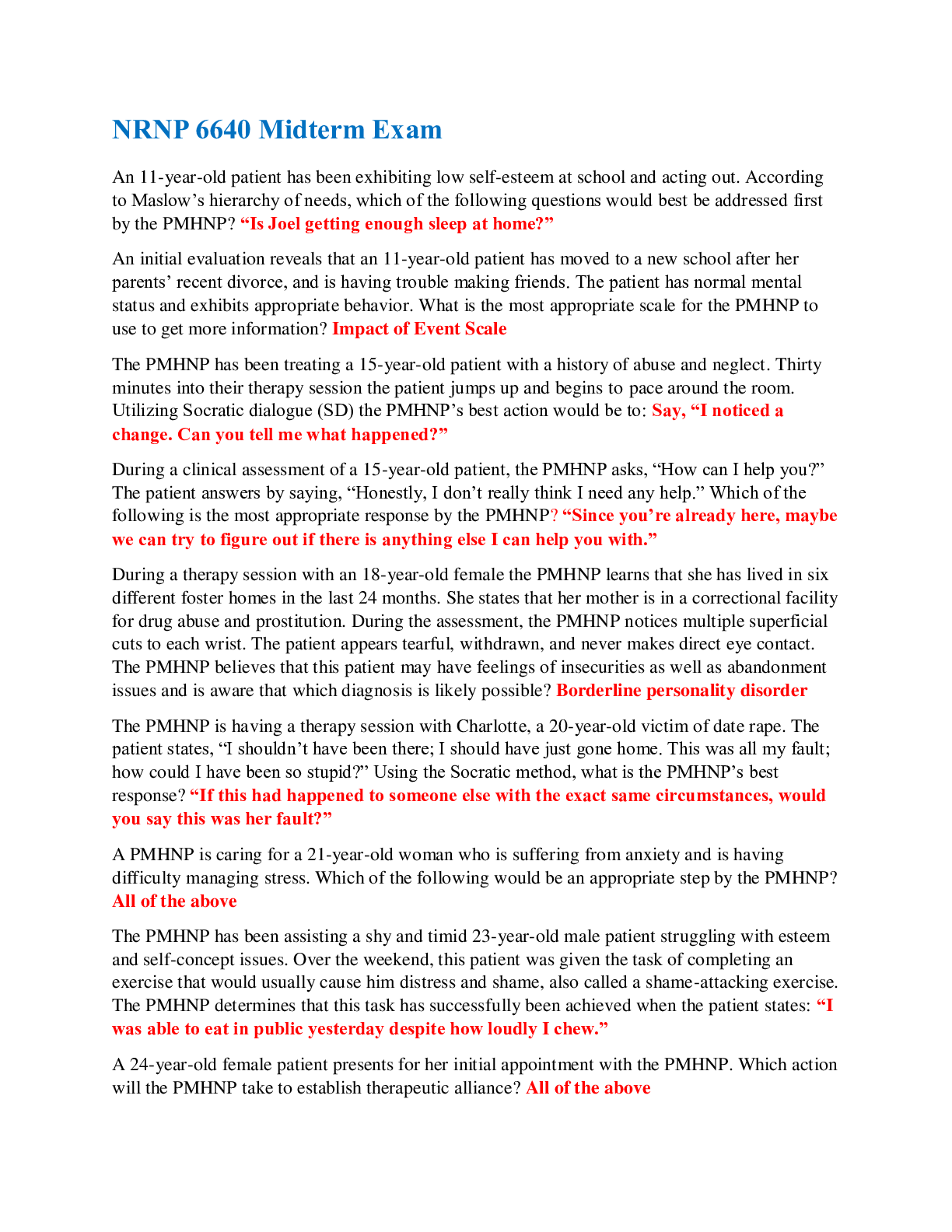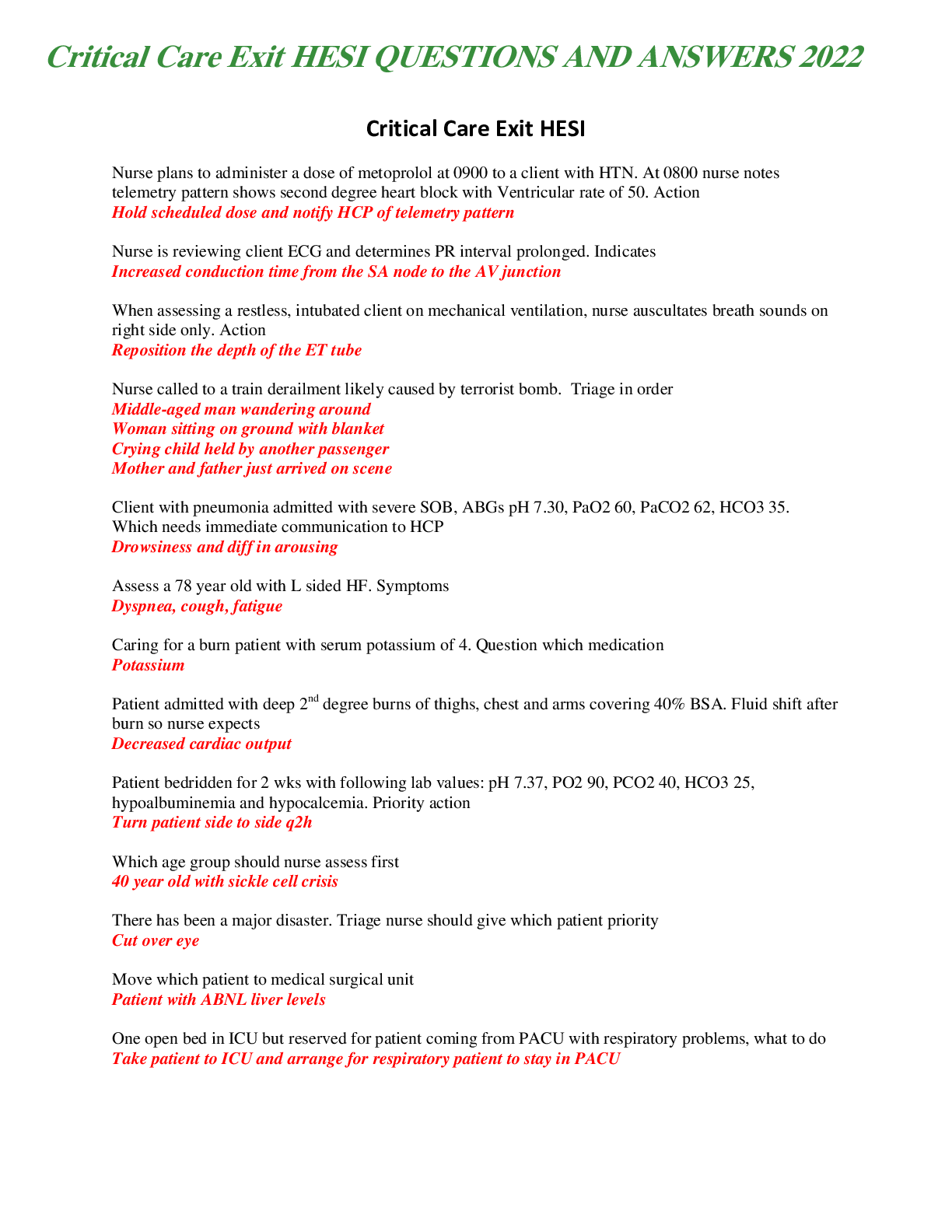IBCLC Exam - Questions And Answers – Graded A
Document Content and Description Below
Embryo and neonate weeks 3-4 Correct Ans:- A primitive milk streak running bilaterally from axilla to groin Embryo and neonate We... eks 4-5 Correct Ans:- Milk streak becomes mammary milk ridge or milk line . Paired breasts develop from this line of glandular tissue Embryo and neonate weeks 7/8 Correct Ans:- Thickening and inward growth into chest wall continue Embryo and neonate weeks 12-16 Correct Ans:- Specialized cells differentiate into smooth muscle of nipple and areola - epithelial cells develop into mammary buds - epithelial branches form to eventually become alveoli Embryo and neonate weeks 15-25 Correct Ans:- Epithelial strips are formed which represent future secretory alveoli - lactiferous ducts and their branches form and open into a shallow epithelial depression known as the mammary pit - the mammary pit becomes elevated forming the nipple and the areola - an inverted nipple results when the pit fails to elevate Embryo and neonate After 32 weeks Correct Ans:- A lumen ( canal ) forms in each part of the branching system Embryo and neonate Near term Correct Ans:- 15-25 mammary ducts form the fetal mammary gland Neonate Correct Ans:- - galactorrhea ( witch's milk ) : secretion of colostral like fluid neonate mammary tissue resulting from influence of maternal hormones - recommended not to express neonatal colostrum because this might lead to mastitis in the newborn Puberty Correct Ans:- 1. Breasts keep pace with general physical growth 2. Growth of the breast parenchyma produces ducts , lobes, alveoli, and surrounding fat pad 3. Onset of menses at 10-12 continues development of the breast - primary and secondary ducts grow and divide . - terminal end buds form , which later become alveoli (small sacs where milk is secreted ) in the mature breast - proliferation and active growth of duct tissue takes place during each period and continues to about 35 years of age Pregnancy breast Development Correct Ans:- 1. Complete development of mammary function occurs only in pregnancy 2. Breast size increases , skin appears thinner , and veins become more prominent 3. Areola diameter increases - Montgomery glands enlarge , and nipple pigment darkens Anomalies in breast Development Correct Ans:- 1. Illnesses, chemo, therapeutic radiation to the chest , chest surgery , or injuries to the chest might affect development 2. Programmed apoptosis ( cell death ) has been suggested as one reason for lower breast cancer rates in bf women Exterior breast Correct Ans:- Located in the superficial fascia ( fibrous tissue beneath skin) between 2nd rib and 6th intercostal space Tail of spence Correct Ans:- Mammary glandular tissue that projects into the axillary region - distinguished from the supernumerary tissue because it connects to the duct system - potential are of milk pooling and mastitis Skin surface of Breast contains Correct Ans:- Nipple, areola, and Montgomery glands Size Correct Ans:- Not related to functional capacity Gives breast it's Shape and size Correct Ans:- Fat composition Size may indicate Correct Ans:- Milk storage potential Nipple Correct Ans:- Conical elevation located slightly below center of areola Average diameter of Nipple Correct Ans:- 1.6cm Average length of Nipple Correct Ans:- 0.7 cm Hoe many milk Duct openings In nipple Correct Ans:- 5-10 Smooth muscle fibers Function as a Correct Ans:- Closure mechanism to keep milk from continuously leaking from the nipple The nipple is Densely innervated With Correct Ans:- Sensory nerve endings What makes the nipple erect when contracted Correct Ans:- Longitudinal inner muscles and outer circular and radial muscles Venostasis Correct Ans:- Slows blood flow and decreases surface area Areola Correct Ans:- Dark pigmented area that surrounds the nipple - elastic like nipple Average diameter Of areola Correct Ans:- 6.4 cm Areola is constructed Of Correct Ans:- Smooth muscle and collagenous , elastic , connective tissue fibers in radial and circular arrangement How does the nipple Aid infant in latching Correct Ans:- Becomes smaller , firmer, and more prominent What happens to Areola in pregnancy Correct Ans:- Darkens and enlarges Where are montgomerys tubercules located Correct Ans:- Around the areola The Montgomery tubercules contain Correct Ans:- Ductal openings of the sebaceous and lactiferous glands and sweat glands What happens to Montgomery glands in pregnancy Correct Ans:- They enlarge and resemble small , raised pimples The Montgomery glands secrete ? Correct Ans:- A substance that lubricates and protects the nipple Some secrete a small amount of milk Secretions of the Montgomery gland may produce ? Correct Ans:- A scent to help the infant locate the nipple Parenchyma are Correct Ans:- Functional parts of the breast [Show More]
Last updated: 2 years ago
Preview 1 out of 55 pages
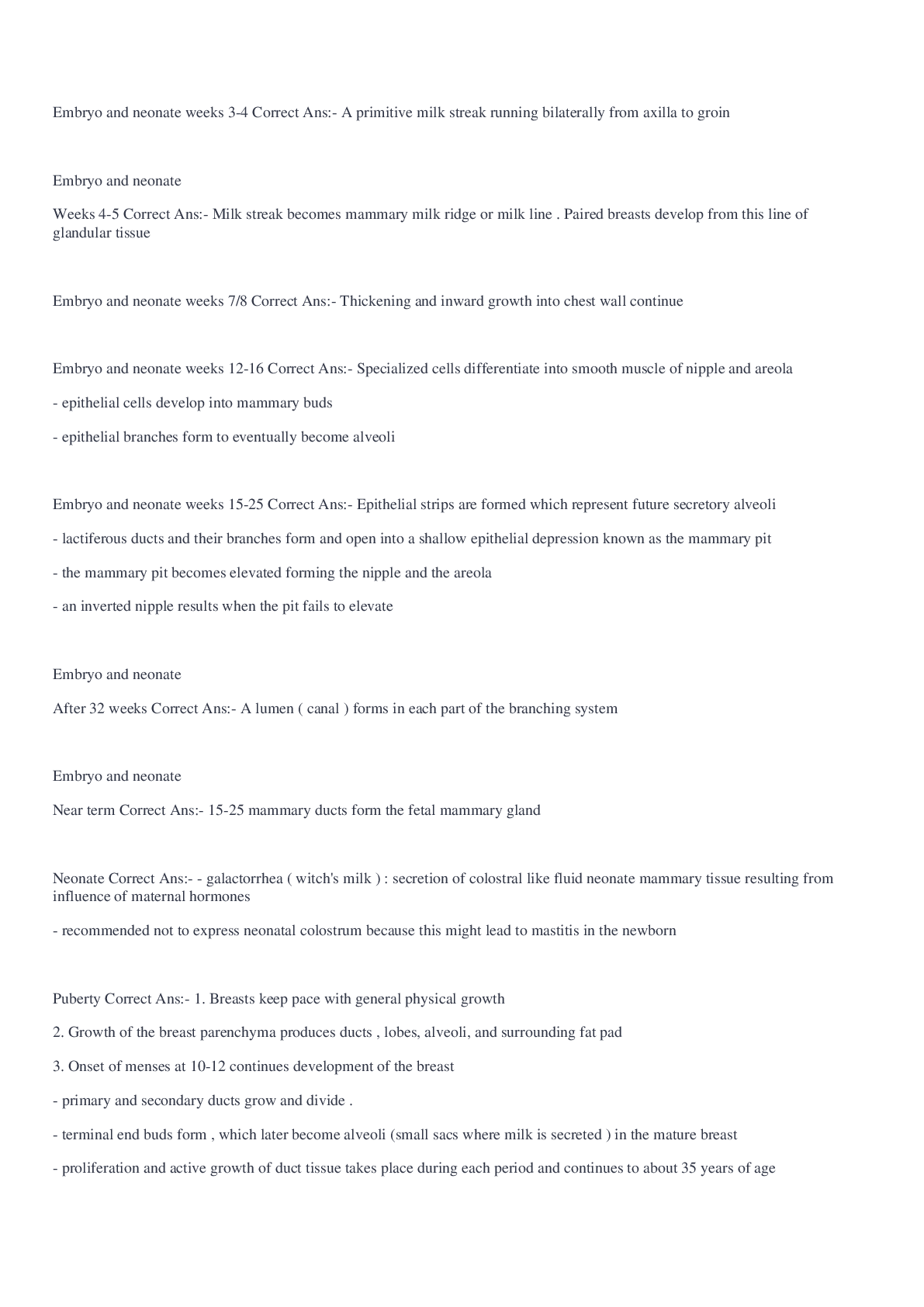
Buy this document to get the full access instantly
Instant Download Access after purchase
Buy NowInstant download
We Accept:

Reviews( 0 )
$15.00
Can't find what you want? Try our AI powered Search
Document information
Connected school, study & course
About the document
Uploaded On
Jun 02, 2022
Number of pages
55
Written in
Additional information
This document has been written for:
Uploaded
Jun 02, 2022
Downloads
0
Views
55









